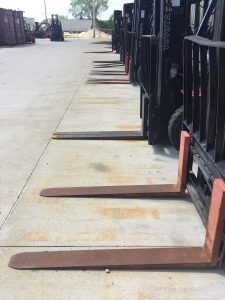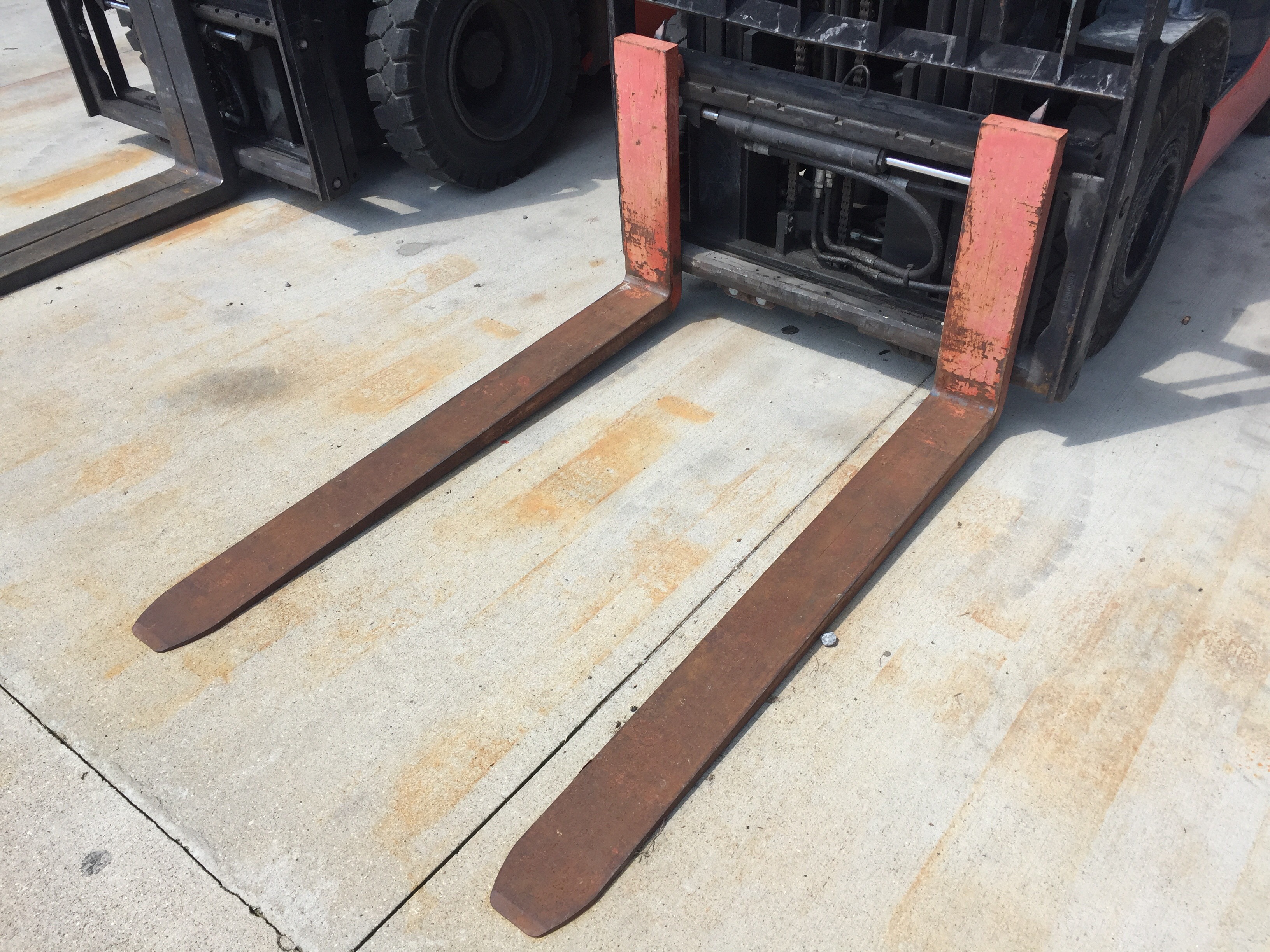The Importance Of Inspecting Forklift’s Forks
Experienced forklift operators are probably well aware how important it is to inspect the fork of their forklifts. Novice operators may not be so aware.
You may think that metal forks are indestructible. They are not. They wear over time. To prove the point, 29 percent of independently inspected forks fail safety standards. Moreover, OSHA requires that forklifts, including the forks be inspected daily or after each shift if the lift is used 24/7.
A quick inspection may not suffice when you have to determine whether or not to replace forklift’s forks. ANSI/ITSDF standards mandate that forklift’s forks be examined at least once a year when the forklift is used in single shift situations.
Skipping an examination can result in a snapped fork or dropped load.
Regular wear and tear causes forks to bend, crack, or wear down. Other factors are also in play and can affect the condition of forklift’s forks. They include improper chain adjustments, minor accidents in which a forklift strikes a wall or column, or overloading a fork beyond its rated capacity.
According to Toyota equipment, a trained person should perform the fork inspection. He should be looking out for any damage, failure, and deformation that might impair the safety of the lift. Any fork that shows a defect should be replaced.
Inspect Forklift’s Forks For Damage, Failure, and Deformities
The trained individual should also thoroughly inspect for cracks. If necessary the fork should be given a non-destructive crack detection process. Attention should focus on the heel and welds that attach the mounting components to the fork blank, any special mounting mechanisms of the fork blank to the fork carrier including bolt-type mounting and forged upper mounting arrangements for hook or shaft-type carriages. If surface cracks are found, then replace the fork.

Inspecting your forklift’s forks is an essential in ensuring safe operation of the forklift.
The straightness of the upper face of the blade and the front face of the shank should be inspected as well. This inspection should be performed with a caliper. If a deviation from straightness exceeding 0.5 percent of the length of the blade or/and the height of the shank, replace the fork.
The fork angle including the upper face of the blade to load face of the shank should be inspected with a caliper. If the fork has a deviation of more than 3 degrees from the original specification, then replace it.
Inspect the difference in height of one set of forks while they are mounted on the fork carrier. If the difference in tip height is over 3 percent of the length of the blade, the forks should be replaced.
If a positioning lock is originally provided on the forklift, then inspect the lock to ensure that it is in good condition and working properly. If any fault is discovered, then the fork should be replaced.
Checking the wear of the fork is also essential. Focus on these three things:
1 – Fork blade and shank. Special attention when inspecting the blade and shank for wear should be paid on the heel. If its original thickness has been reduced by 90 percent, then replace the fork.
2 – If fork hooks have been originally provided, then check the support face of the top hook and the retaining faces of both hooks. Check for wear, crushing and other defects. If anything is observed, replace the fork.
3 – The legibility of marking when originally provided should be checked. If the fork marking is not clearly legible, replace the fork.
(Source: toyotaequipment.com.)

